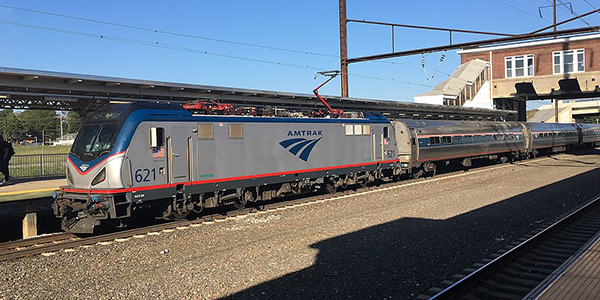FERC last week denied a complaint by Amtrak challenging the transmission rates charged to the railroad company by PPL and seeking more than $12.5 million in refunds (EL19-78).
Exelon’s Constellation NewEnergy (CNE) supplies electricity to the Amtrak-owned Conestoga substation outside Lancaster, Pa., from or through the nearby Safe Harbor hydroelectric plant, which is directly connected to the substation. Amtrak alleged in its May 2019 complaint that it is being assessed “unreasonable” charges by PPL for network integration transmission service (NITS) because no PPL transmission facilities are used to deliver energy to it from Safe Harbor.
PPL, which formerly owned the substation, holds a “floating easement” there, allowing energy generated at Safe Harbor to be delivered to the transmission system to serve third parties. The power needed by the railroad flows through the substation to serve its rail system at Parkesburg and Royalton in Pennsylvania, and at Perryville, Md.
Amtrak complained that PPL’s NITS charges for energy delivered from Safe Harbor to Conestoga to serve Parkesburg and Royalton have “no basis in the physical configuration of the substation, operation or Amtrak’s consumption patterns.”
FERC found that PJM’s Tariff provisions applied appropriate NITS charges at the Conestoga substation because Amtrak indicated it receives most of its power from Safe Harbor, which is a network resource.
“Although Amtrak claims that PPL violated the PJM Tariff by calculating Amtrak’s Parkesburg and Royalton load based on an unfiled methodology, Amtrak’s fundamental argument is that Amtrak should not be charged for NITS for its load at Parkesburg and Royalton if the power Amtrak is supplied by its retail supplier does not flow across PPL’s transmission facilities,” the commission wrote, saying that the railroad is seeking transmission services “that are inconsistent with the PJM Tariff and commission policy.”
Amtrak also acknowledged that on “rare occasions” when Safe Harbor is unable to meet energy demands, power flows in through PPL’s Manor substation on PPL lines, across Safe Harbor’s frequency converter and into the Conestoga substation.
FERC responded that having a backup power source “is what it means to take and rely on network service” and that a transmission provider like PPL “plans and provides for firm transmission capacity sufficient to meet the customer’s current and projected peak loads.”
“Given these benefits, it is appropriate that Amtrak bears the costs associated with its reliance on the transmission system, as its retail supplier, CNE, is a network customer relying on a network resource,” the commission wrote.




